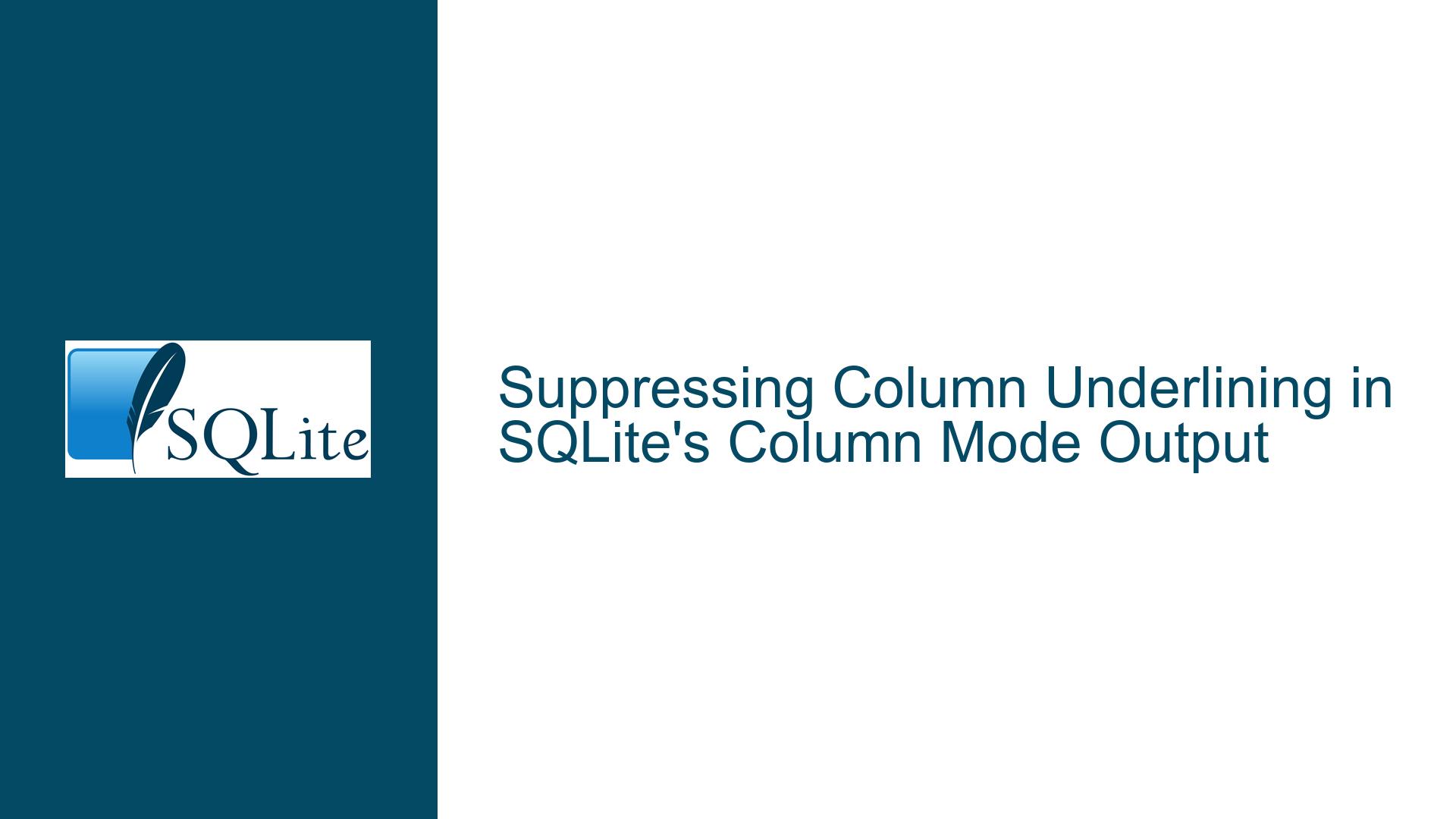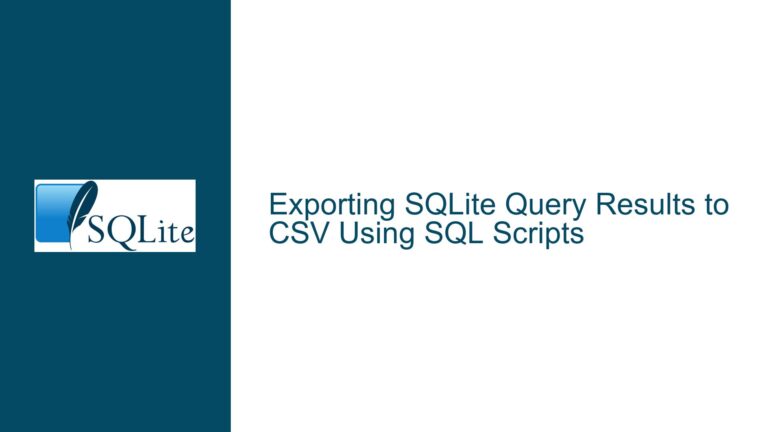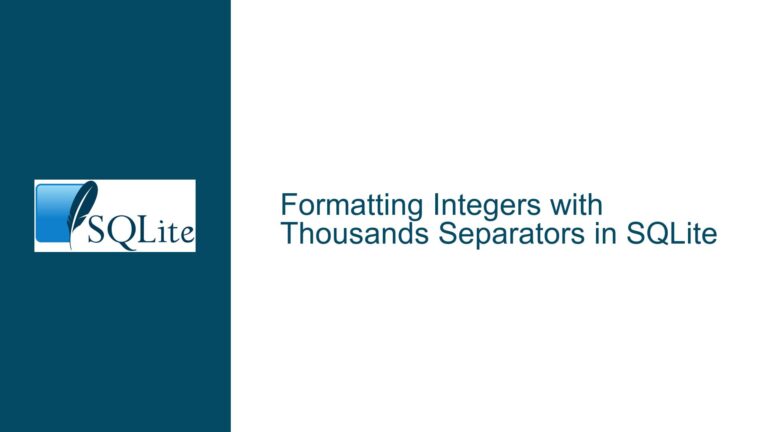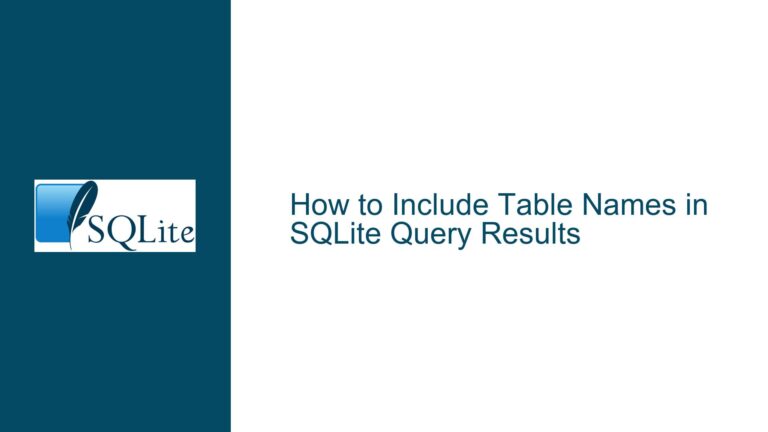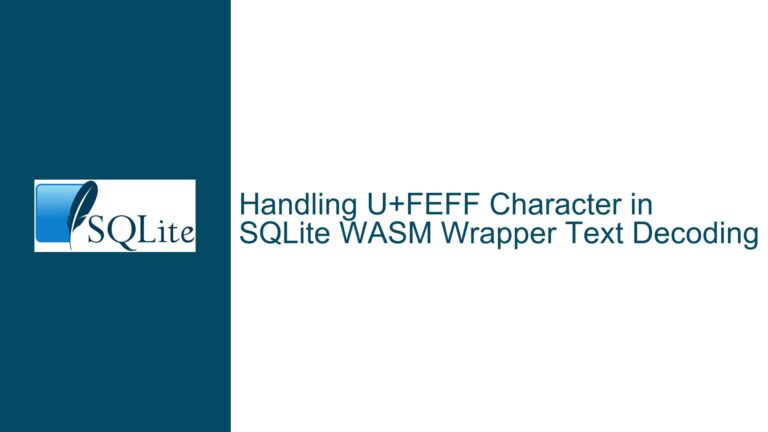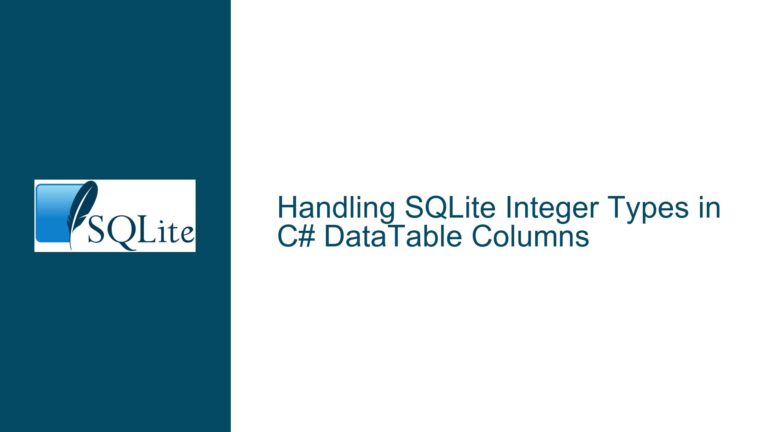Suppressing Column Underlining in SQLite’s Column Mode Output
Understanding Column Mode Underlining and Its Impact on Data Export
SQLite’s command-line interface (CLI) provides several output formatting options, with .mode column being a popular choice for displaying query results in a human-readable, tabular format. By default, this mode underlines column headers to visually separate them from the data rows. While this underlining improves readability for terminal-based workflows, it introduces complications when exporting data to applications like Microsoft Excel or when programmatically processing the output (e.g., creating data frames in Python or R).
The underlining character (typically -) is not part of the actual column name or data. Instead, it is a formatting artifact generated by the CLI to enhance readability. This becomes problematic when users attempt to copy-paste results into spreadsheets or parse the output programmatically, as the underlines must be manually removed or filtered out. For example, pasting underlined headers into Excel requires additional cleanup steps to avoid misalignment or invalid data types. Similarly, parsing such output programmatically adds complexity to scripts, as developers must account for the extra lines containing dashes.
The core challenge lies in SQLite’s lack of a built-in option to disable underlining in column mode. Users seeking to automate data export workflows or integrate SQLite output with downstream tools must employ workarounds to achieve clean, underline-free results. This issue is particularly acute on Windows systems, where common Unix-based text-processing utilities like awk are not natively available, limiting the applicability of some solutions proposed in the SQLite community.
Root Causes of Column Underlining and Compatibility Challenges
1. SQLite CLI Design Limitations
The SQLite CLI prioritizes simplicity and terminal-based usability. Features like .mode column are optimized for interactive use, where underlining improves readability. The absence of a configuration option to disable underlining reflects this design philosophy. While alternative modes (e.g., .mode tabs or .mode csv) exist, they sacrifice human readability for machine-friendly formatting. This creates a gap for users who need both readability and clean data for export.
2. Platform-Specific Toolchain Dependencies
Many solutions to remove underlines rely on Unix utilities like awk, which are not natively available on Windows. For example, the command .once "|awk 'FNR!=2 {print}'" filters out the underline row by skipping the second line of output. However, Windows lacks awk by default, leading to errors such as 'awk' is not recognized.... This forces Windows users to either install third-party tools (e.g., GNUWin32’s GAWK) or find alternative methods, complicating workflows and introducing external dependencies.
3. Data Export Requirements
The need to suppress underlining often arises from specific use cases:
- Excel Integration: Pasting underlined headers into Excel requires manual removal of the underline row to avoid formatting issues. While Excel’s "Text to Columns" feature can mitigate this, it adds steps to the workflow.
- Programmatic Parsing: Scripts using
subprocessin Python orsystem()in R to capture SQLite output must strip underline rows, increasing code complexity. - Batch Processing: Automated scripts that process multiple queries benefit from underline-free output to avoid repetitive cleanup logic.
These requirements highlight the tension between SQLite’s terminal-centric design and real-world data export needs.
Comprehensive Solutions for Underline-Free Column Mode Output
1. Using .mode tabs for Machine-Friendly Output
The simplest solution is to switch to tab-separated output, which omits underlines and is compatible with most data-processing tools:
.mode tabs
.header on
.once output.txt
SELECT * FROM employees;
- Advantages: No underlines; works natively on all platforms.
- Disadvantages: Less human-readable than column mode.
- Post-Processing: Use
.output stdoutto reset output to the terminal after writing to a file.
2. Redirecting Output to Clipboard (Windows)
Windows users can leverage the clip utility to bypass underlines:
.mode tabs
.header on
.once |clip
SELECT * FROM employees;
- Steps:
- Execute the query; results are copied to the clipboard.
- Paste directly into Excel or a text editor.
- Note: Ensure
clip.exeis available (included in Windows Vista and later).
3. Installing GAWK on Windows
For users requiring column mode’s readability without underlines, install GAWK (GNU AWK) for Windows:
- Download from GNUWin32.
- Add GAWK to the system PATH.
- Use SQLite’s
.oncedirective to filter underline rows:
.mode column
.once "|gawk 'FNR!=2 {print}'"
SELECT * FROM employees;
- Output: Column-aligned data without underlines.
4. Hybrid Approach: Column Mode with File Output
To retain column alignment while saving to a file:
.mode column
.header on
.output results.txt
SELECT * FROM employees;
.output stdout
- Post-Processing: Manually remove the underline row from
results.txtusing a text editor or script.
5. Leveraging the .excel Command
SQLite’s .excel command automates Excel integration:
.excel
SELECT * FROM employees;
- Behavior: Opens Excel with the query results in a new worksheet.
- Limitations: Requires Excel installed; may not handle large datasets efficiently.
6. Custom Scripting with Python/R
For programmatic workflows, use a scripting language to execute SQLite queries and process output:
import sqlite3
import subprocess
# Execute query and capture output
output = subprocess.check_output(
["sqlite3", "database.db", "-cmd", ".mode column", ".header on", "SELECT * FROM employees;"]
).decode()
# Remove underline row
cleaned = "\n".join([line for i, line in enumerate(output.splitlines()) if i != 1])
print(cleaned)
7. Configuring Persistent Settings
Add commonly used settings to the ~/.sqliterc file (Unix) or %USERPROFILE%\.sqliterc (Windows):
-- .sqliterc
.mode tabs
.header on
- Override Interactively: Use
.mode columnduring sessions when readability is needed.
By combining these strategies, users can eliminate column underlining while maintaining compatibility with Excel, scripting workflows, and automated data pipelines. Platform-specific constraints (e.g., Windows vs. Unix) and workflow requirements (e.g., interactive vs. batch processing) dictate the optimal approach.
